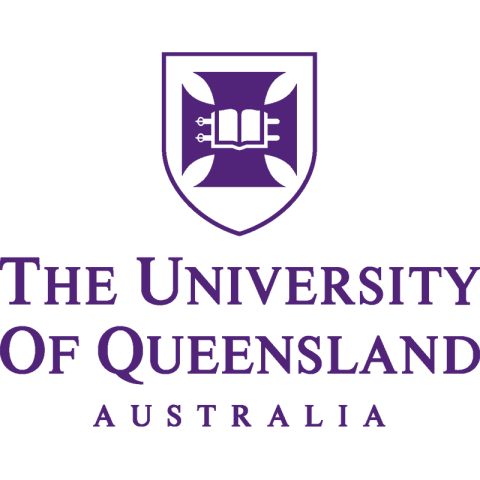
Intersectionality and why in 2022 inclusion must allow for multiple identities
Universities adopt diversity and inclusion plans to achieve equity for specific areas such as gender, sexuality or disability. Following the lead of international human rights and domestic legislative frameworks, most institutions silo their plans and practices so that each plan or strategy deals with a single attribute. This results in plans that focus exclusively on disability, gender, indigeneity or LGBTQIA+.
Although this focus on a single attribute achieves positive results for a person with a single attribute, it does not adequately support a person with multiple or intersecting attributes. For example, an Aboriginal female student, an intersex international student with autism or a gay staff member who uses a wheelchair.
- Widening access to postgraduate studies: from research to strategy to action
- How educators can help manage Covid anxieties on campus
- Has government investment in higher education equity been worth it?
When plans and strategies only deal with a single attribute, people with multiple attributes find themselves only partially supported by each plan or strategy. This leaves people with intersecting attributes in limbo, having to navigate systems that do not fit and fail to understand or support their lived experiences.
Understanding how diversities intersect
To understand how Australian universities approach diversity and inclusion, we downloaded every relevant strategy and associated action plan that was publicly available from Australian universities and university groupings in 2022. We then analysed these policies and strategies to identify areas of best practice, synergy or concern.
Of all available diversity action plans in Australian universities, 24 per cent expired in 2020, with the pandemic shifting universities’ focus to other areas. This was especially prevalent for plans that were not related to government policy or university agreements, such as those that targeted culturally and linguistically diverse (CALD) community members. As universities reopen and begin to update their diversity and inclusion plans, we suggest that these revisions should more deeply consider the new perspectives that intersectionality can offer.
Our analysis of university strategies and action plans found that only 20 per cent mentioned intersectionality (or a variation of this term), and even fewer enacted intersectional action items or approaches. This shows not only that there is a nascent understanding and desire to embrace intersectionality within higher education, but also that creators of these plans and strategies do not yet know how to do so.
Five ways to enact intersectionality
The term intersectionality is used, but it appears the concept is not fully understood. Kimberlé Crenshaw (professor at UCLA School of Law and Columbia Law School) is credited as the creator of the term. Dr Crenshaw used the concept of intersectionality to explain the way in which minorities with multiple diverse identities (for example, gay, Aboriginal, and disabled) experience the world through the overlapping and compounding of their identities rather than entirely separately.
We suggest that diversity and inclusion strategies consider circumstances where people have multiple and intersecting attributes and use these intersections as positions of strengths and opportunities to leverage synergies and influence and for celebration. To do so, we suggest:
1. Become a champion of change and implement nothing about us unless it is led by us
Appoint community members to lead committees and working groups. Be aware of the unique perspective each member of a team brings, as the experiences of those with a single attribute and those with intersecting attributes can differ significantly, and a mix of experiences can give greater representation.
2. Centre intersectionality in discussions and objectives
Include intersectionality in agenda items for meetings, especially around creating intersectional KPIs. Acknowledging the importance and existence of intersectionality will naturally lead to its consideration.
3. Assume that people within your groups experience intersectionality and ask them to share these perspectives
When people are made to choose between their intersecting identities, the strength of their intersectional experience is unable to be fully articulated or realised. Where measures are targeted at only one attribute, it can limit individuals and fail to deliver on the creative possibilities of their intersecting attributes.
4. Collaborate with other diversity working group members and student collective representatives
Be sure to check in with their approaches and see how their communities will be affected by your plans and strategies and how they can be included. This is an easy way to find representation within any university and will proactively identify overlapping and synergistic communities as well as engaged champions! Another option is to seek out subject matter experts to help inform discussion, which is also an opportunity to support the career development of people with lived experience.
5. Look to the approaches of other plans to inspire action
Reaching out and referencing other plans that take an intersectional approach can help ensure impact and effective action. Take note of plans that are intersectional at the core, such as the approach taken by Sage Athena Swan, which includes not only sections catering to specific groups but also intersectionality. Their guidelines state: “While everything within the Athena Swan application should be considered through the primary lens of gender, the other factors that shape people’s identity and therefore their experience within the institution should not be ignored.”
This ethos is useful when approaching diversity strategies and action plans. While identities exist and communities coalesce around these identities, engender a sense of belonging and provide validation and support, we need to recognise the complexity of the human condition. We are never only one identity but many. These intersectional spaces – across age, disability, gender, LGBTQIA+ and more – have potential not only to compound disadvantage but also to provide opportunities. Our strategies and action plans must valorise the ways in which identities and communities intersect, creating powerful synergies that can influence and must be celebrated.
We are a diverse community and by foregrounding intersectionality, we not only include everyone but create something greater than the sum of our parts.
Paul Harpur is associate professor and future fellow at the TC Beirne School of Law, Dino Willox is director of student employability and a senate member, and Brooke Szucs is a research assistant at the TC Beirne School of Law, all at the University of Queensland. This research was made possible by the Australian Research Council funding for the Future Fellowship FT210100335.
If you found this interesting and want advice and insight from academics and university staff delivered direct to your inbox each week, sign up for the THE Campus newsletter.




